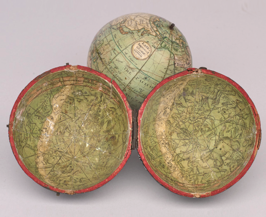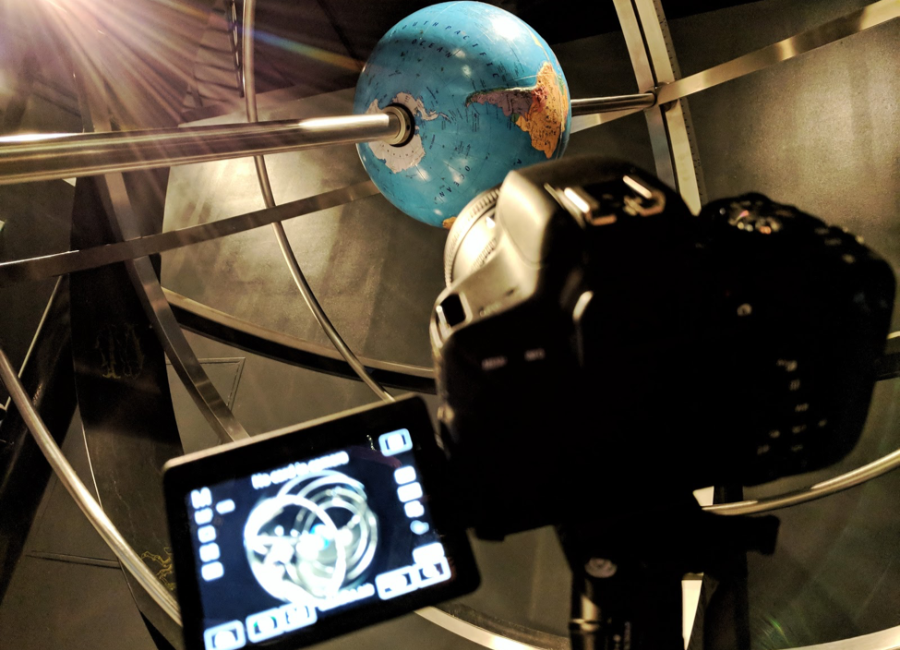Out of the pocket to outer space: The saga of a portable globe

You have certainly marveled at the space artifacts we have on display in the Mission Moon exhibition. But it might surprise you that one of the oldest objects in our collections to have flown to space is actually a 200-year-old pocket globe. In December 1999, it was taken aboard Space Shuttle Discovery during the mission STS-103, whose goal was to repair and upgrade some components of the Hubble Space Telescope (HST). The globe was carried by astronaut Dr. John Grunsfeld, a former Adler Trustee who is also the grandson of Ernest A. Grunsfeld, Jr.—the architect who designed the Adler’s original building.
In case you are wondering: No, the astronauts did not take the pocket globe as a backup in case the Shuttle’s navigation systems failed. It was flown as a symbolic gesture, and very appropriately. Closed and self-contained as they may look at first sight, globes are paragons of exploration—just like the Space Shuttle and the HST. And before human beings were able to see the Earth in its full splendor from space, the closest one could get to that life-changing experience was to stare at a terrestrial globe.
Terrestrial globes played an essential role in creating the modern image of our planet and remain an important tool for learning geography. Celestial globes were essential for the mapping of the heavens and to foster the precise knowledge of star positions. Both types of globes played a crucial role in the development of navigation, which unfolded first in the seas, then in the air, and finally in space.
From the sixteenth century onwards, globes became symbols not only of learning, but also of wealth and might, being a common presence in the homes and offices of the powerful and the affluent. But lest you wanted to impress your friends and acquaintances while in transit, or if the most exquisite pieces remain outside the reach of your purse, Joseph Moxon (1627-1691), a British cartographer, introduced the pocket globe in the 1670s.
Typically comprising a small terrestrial globe inside a round case with two hinged halves showing the northern and southern constellations, the pocket globe became a fixture among traveling lecturers, students, and generally young men willing to show they cared about science. After all, what better way to boost one’s intellectual sophistication than to carry the Earth and the sky around in your pocket and take them out whenever there was a chance to discuss astronomy and geography?
We have several examples of pocket globes in our collections, including one by Moxon himself, and of course a number of celestial globes by the most prominent cartographers. But this globe, which was made in London sometime between 1809 and 1825 by an obscure maker called Lane, is probably the only historical globe to have flown to space, which makes it unique not only at the Adler, but among the globes of the world!
After the STS-103 flight, the Lane globe was accessioned into our collections as the result of a generous gift from Adler Trustee Robert N. Gordon. If you think that after such an adventurous path, the museum is the end of the line for this pocket globe, take heart: As it happens with any other artifact that comes into our collections, it just gained a new life—helping us tell the story of the human drive to explore, experiment, and learn.







